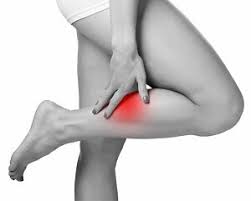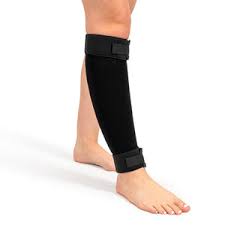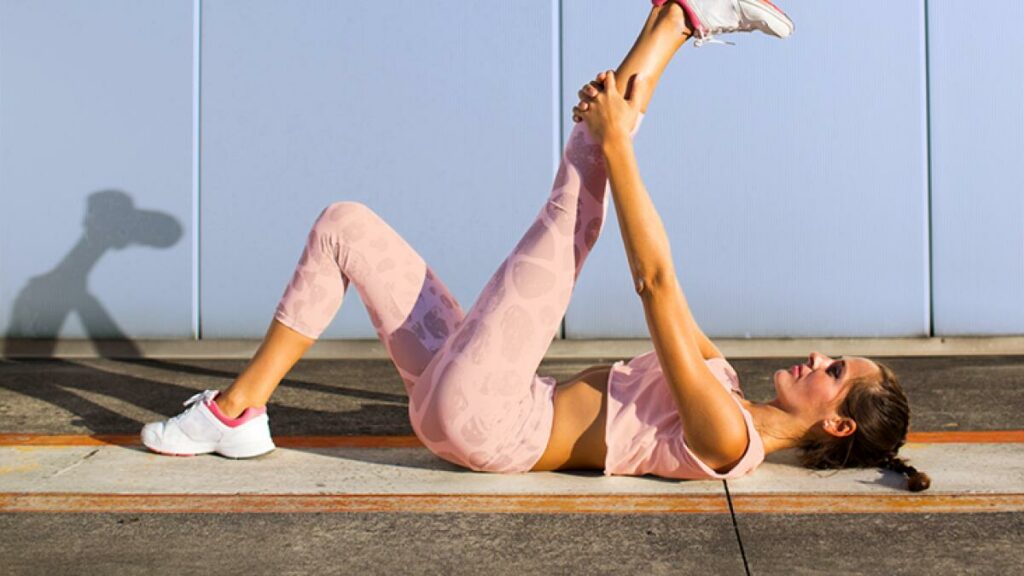Do you experience pain in your calf muscles after running or working out? You may have a calf strain. This is a common injury that can be caused by many things, such as running too hard or fast, not stretching properly before exercising, or wearing the wrong shoes. If you are experiencing any of the symptoms of a calf strain, it is important to seek treatment right away. In this blog post, we will discuss the causes, symptoms, and treatment of calf strains.
Contents
What Is calf strain?

A calf strain is a tear or partial tear of the muscles in the back of the lower leg. The calf muscle group consists of the gastrocnemius and soleus muscles, which work together to flex the foot and point the toes. These muscles attach to the Achilles tendon, which attaches to the heel bone. The calf contains 9 different muscles, any of which can be strained. However, the most common muscle injury in a calf strain is the gastrocnemius.
There are three grades of muscle strains, depending on the amount of damage to the muscle:
Grade 1: A mild injury with some overstretching of the muscle. There may be some discomfort and soreness, but you can still walk without pain.
Grade 2: A more moderate injury with a partial tear of the muscle. You will likely feel pain when walking and may need to use crutches.
Grade 3: A severe injury with a complete tear of the muscle. You will likely feel a sharp pain and may not be able to walk.
What Causes calf strain?
Calf strains are most commonly caused by overstretching or forcefully contracting the muscles, such as during running or jumping. This can happen if you:
- Sudden change in direction
- Sudden stop
- Fall
- Blow to the muscle
- Lifting something heavy
Symptoms
There are various symptoms of calf strain:
1. Pain in the back of the lower leg
2. Swelling
3. Muscle spasms
4. Difficulty walking or standing
5. Bruising
6. Tenderness
Risk Factors
Wearing high heels or shoes that do not fit well can also contribute to calf strains. Other risk factors include:
Age
Muscle strains are more common in young people, who are more active, and in older adults, whose muscles may not be as strong.
Muscle strains
are more common in young people, who are more active, and in older adults, whose muscles may not be as strong. Weak muscles: Having weak calf muscles can make you more likely to strain them. Having weak calf muscles can make you more likely to strain them.
Poor flexibility
in the calf muscles can lead to a condition called Achilles tendonitis, which is a common overuse injury in runners. The Achilles tendon is the large tendon that connects the calf muscle to the heel bone. When this tendon becomes irritated and inflamed, it can cause significant pain and make it difficult to walk or even stand.
If you suspect you have a calf strain, it is important to see a doctor or other healthcare provider for an accurate diagnosis.
Poor conditioning
Overuse of the calf muscle, especially during activities that involve sudden stops and starts (like basketball or tennis), can lead to a calf strain.
Lack of flexibility
If your calf muscles are tight, they’re more susceptible to injury.
Poor footwear
Wearing shoes that don’t fit properly or provide enough support can contribute to calf strain. ‘
Sudden change in activity
If you dramatically increase the intensity or duration of your exercise routine, you may put too much stress on your calf muscles and develop a strain.
Trauma
A direct blow to the muscle, such as from a fall or collision, can cause a calf strain.
What Are The Treatment Options For Calf Strain?

There are various treatment options as follows:
Rest
This is the most important treatment for a calf strain. You need to take a break from any activities that may have caused the injury. Depending on the severity of your injury, you may need to rest for a few days or a few weeks.
Ice
Applying ice to the injured area can help reduce swelling and pain. Do this for 20-30 minutes at a time, several times a day.
Compression
Wearing an elastic compression bandage can also help reduce swelling.
Elevation
Keeping your leg elevated above heart level will also help reduce swelling.
Pain relievers
Over-the-counter pain relievers such as ibuprofen (Advil, Motrin) or naproxen (Aleve) can help reduce pain and inflammation.
Physical therapy
A physical therapist can teach you exercises to stretch and strengthen the muscles in your calf. This can help prevent future injuries.
Surgery
In some cases, surgery may be necessary to repair the damaged tendon.
Prevention
You can help prevent calf strains by:
1. Warm up properly before exercise or activity: A good warm-up will help increase blood flow to your muscles and tendons and reduce your risk of injury.
2. Stretching regularly: Stretching helps maintain flexibility in your calf muscles, which can reduce your risk of injury.
3. Wear proper footwear: Wearing shoes that fit well and provide support can help prevent injuries.
4. Do calf stretches: Stretching your calves regularly can help keep them loose and prevent injuries.
5. Avoid high-impact activities: If you have a history of calf injuries, it’s best to avoid activities that put a lot of stress on your legs, such as running or playing tennis. 6. cross-train:
6. Wear proper footwear: Choose shoes that fit well and provide support for your feet and ankles. This will help reduce the risk of injuries.
4. Avoid sudden changes in activity level: Sudden changes in activity level can cause calf muscles to become fatigued and more susceptible to injury. If you must make a change, do so gradually to give your muscles time to adjust.
5. Build up slowly when increasing your activity level or intensity: When you’re ready to start being active again, it’s important to ease back into things. Try not to do too much too soon, as this can put unnecessary stress on your calf and delay healing. Start with low-impact activities and gradually increase the intensity and duration of your workouts over time.
If you think you may have a calf strain, it’s important to see your doctor. They can diagnose the injury and develop a treatment plan that’s right for you.
Conclusion
It may be concluded that calf strain is a significant problem that can cause immense pain and discomfort. However, with the proper understanding of its causes and symptoms, as well as the implementation of effective treatment methods, it is possible to manage this condition and improve quality of life.
Physical Therapy help patients recover from pain. If you’re experiencing Back pain, Shoulder pain, Knee pain, Neck pain, Elbow pain, Hip pain, or Arthritis pain, a physical therapist at MantraCare can help: Book a physiotherapy session.


